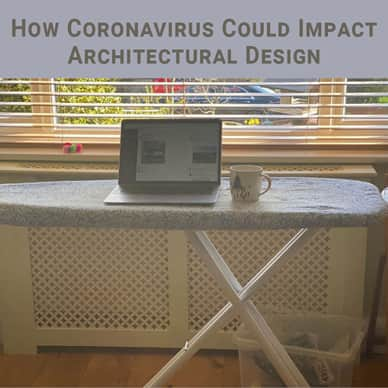How Coronavirus Could Impact Architectural Design
Published on April 21, 2020 by Marie McCarthy

The coronavirus pandemic has the entire world retreating to the refuge of their houses. States across the country are under strict stay-home orders, and many companies have resorted to remote options. The unprecedented degree of isolation has many re-thinking the notion of "home."
While many are cooped up inside, some are taking it upon themselves to finish remodeling projects around their homes. Dwell.com interviewed architects to find out how they think the pandemic may shape the future of architecture.
Ancapa Architecture founder Dan Weber says the notion of a home office will become more important.
"Some [employers] may find that they only need half as much space as they did before, and that they only need a physical office for staff meetings and in-person client meetings…This health crisis could possibly have a long-term effect on how important a home office—or at least a working nook—is in residential design."
The pandemic has been especially difficult for homeowners who do not have a designated office space. CNN highlighted some workers who have converted their closets, kitchens and even bathtubs into make-shift work spaces.
Remote workers need a space that can accommodate a desk with a computer, keypad and mouse on top, and room for files and other supplies would be handy too. Will future homes have a more pronounced, separated space to fulfill these needs? And will this pandemic help employers realize the most important functions of the working "office?"
Architect Maziar Behrooz suggests that with more time being spent in the home, residents will crave utility over luxury, and opt for spaces that are more useful than they are aesthetic.
As the pandemic continues to grow across the country, only time will tell how COVID-19 will affect the future of architecture.
